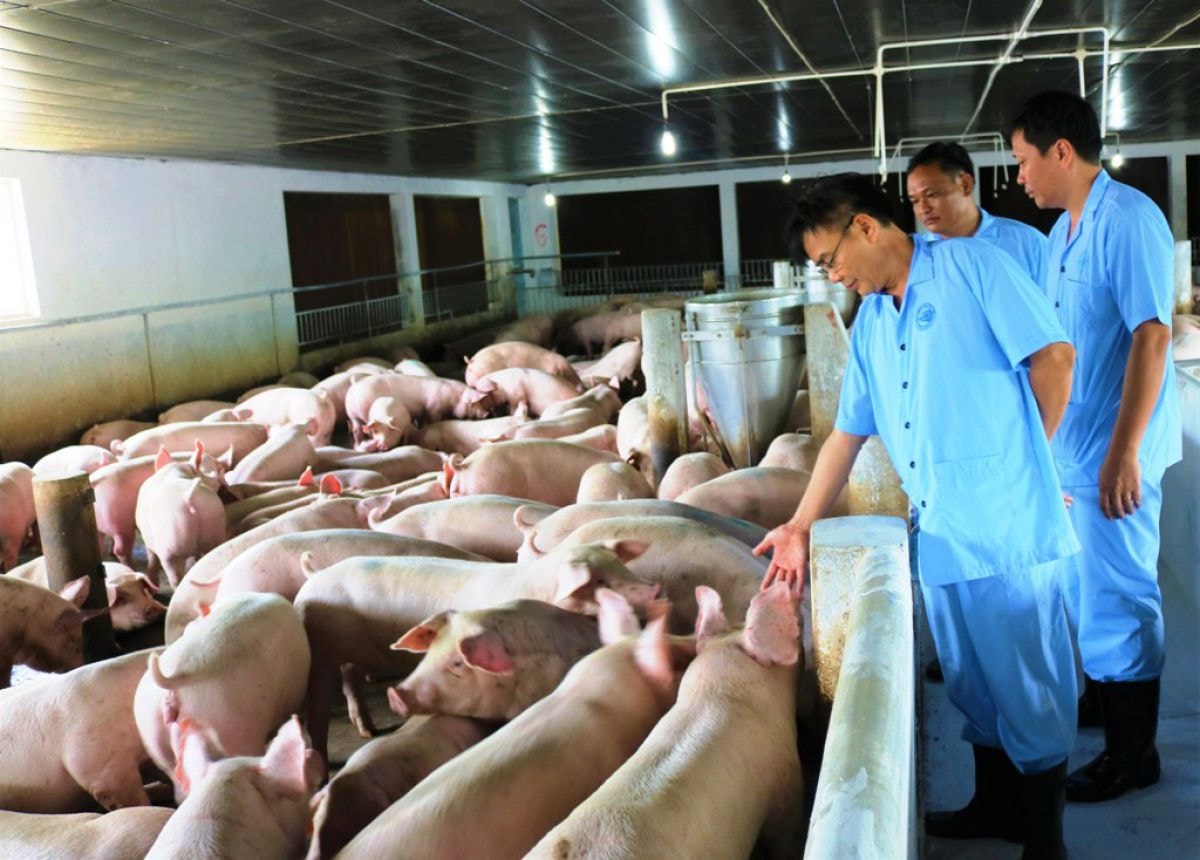Department of Animal Health: Pigs in epidemic areas are slaughtered and consumed on-site under control.
That was the affirmation of Mr. Nguyen Van Long - Head of Epidemiology Department, Department of Animal Health (Ministry of Agriculture and Rural Development) at the online seminar with the topic "Prevention and control of African swine fever and promotion of safe pork consumption" recently held in Hanoi.
In response to the current information that many farms (not affected by the epidemic) but located in epidemic areas in communes, districts and provinces cannot sell pigs but still have to keep them, causing these households to bear increasing costs and economic losses, Mr. Nguyen Van Long - Head of the Epidemiology Department, Department of Animal Health said: Firstly, we sympathize with livestock farmers in epidemic areas. According to current regulations of the Department of Animal Health, the first step is to comply with veterinary laws. This is not only a concern of livestock farmers but has been directed by the Prime Minister and the entire political system.
 |
Mr. Long spoke at an online seminar with the topic "Prevention and control of African swine fever and promotion of safe pork consumption". |
According to Mr. Long, livestock farms in epidemic areas that have samples taken for testing and are free of cholera are still allowed to slaughter on-site under the supervision and guidance of veterinary agencies.
"Pig slaughter must be carried out at licensed slaughterhouses, ensuring veterinary hygiene, with veterinary staff to control the slaughter. Slaughterhouses must fully clean and disinfect after each slaughter. Regarding support policies according to regulations, the Ministry of Agriculture and Rural Development has compiled and reported to the Government to issue Resolution No. 16/NQ-CP allowing provinces and cities to use local support regulations to support people," Mr. Long affirmed.
 |
Livestock farms in epidemic areas that have been sampled and tested and are free of cholera are still allowed to slaughter on-site under the supervision and guidance of veterinary authorities. |
Speaking more about the time to re-raise pigs after the diseased pigs are destroyed, Mr. Nguyen Van Long said: According to the regulations in Circular 4527 dated November 15, 2018 of the Ministry of Agriculture and Rural Development, after 30 days from the date the locality destroys the last infected animal, farmers can re-raise. However, we recommend that people should not re-raise their herds hastily and massively.
Initially, farmers should only raise 10% of their capacity, called indicator farming, then take samples to see if pathogens still exist and then gradually increase the herd to reach the initial farming level.
 |
Many livestock farms (without the epidemic) in some epidemic areas in communes, districts and provinces are in dire straits because pigs cannot be consumed. |
"Why 30 days and not another number? If infected with ASF, it takes 19-30 days for the pig to develop the disease. After that period of time, if no animal is infected, we will be allowed to declare the end of the epidemic and be able to re-herd. We have researched very carefully to come up with this number, not just saying it randomly," Mr. Long affirmed.


